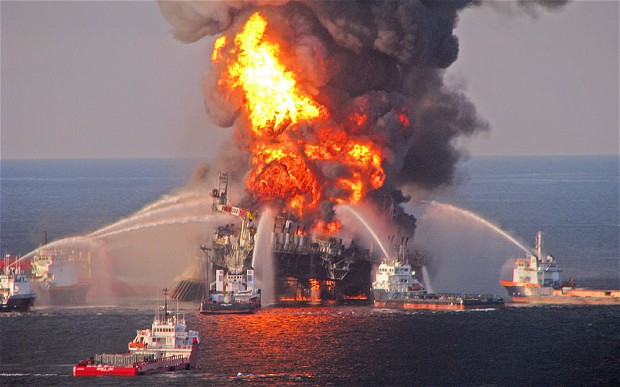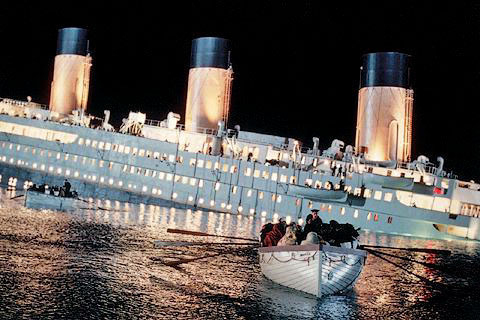If you don't already have 'quality' as your primary business focus, you're leaving yourself open for a world of hurt.
These quality failures below cost human life, caused environmental destruction and turned their products into literal explosive devices. Your product might not ever be capable of doing anything that terrible, but you can still learn from the failure because quality failure can be devastating to your business.
Image sourced from: renesch.com
The Samsung Note 7 Debacle
When the Samsung Galaxy Note 7 hit the market earlier this year, everything seemed like it was business as usual for the tech giant.
In the world of smartphones Samsung was king and had more market share than even the mighty Apple.
The Note 7 had been receiving positive reviews and had a strong marketing campaign but there was just one problem – their phones exploded.

Image sourced from: geeknaut.com
On a Southwest airlines flight, passengers needed to be evacuated from a plane due to a Note 7 overheating and emitting smoke through the aircraft.
This catastrophic quality failure was apparently a result of Samsung’s rivalry with Apple in their attempt to compete with the iPhone 7 this holiday season.
However, with the release of Google’s new Pixel phone and their main competitor Apple releasing another iPhone, the future is now looking bleak for the world’s most popular smartphone maker after they announced a mass recall of their defective new phone.
So What Does This Tell Us?
It tells us that market share, brand loyalty and trust can take years to build, but it only takes a moment to lose it. That’s why quality failure can have such a devastating impact on your business.
The urge to best your main competition may be insatiable, but if you roll out a substandard product it can have dramatic consequences. And remember, it only takes a handful of defective products to ruin your credibility and give you a bad reputation.
Quality is important – so make sure your processes are stopping you going near that 'failure cliff' and aren't the ambulance at the bottom of it.
The 2008 Global Financial Crisis - the world's largest quality failure
The 2008 Global Financial Crisis has been labelled as the “greatest quality failure of all time” by Senior Risk and Compliance Executive Paul Moore who was fired in 2004 for warning senior managers about the danger of taking risks.
It seemed like no one was interested in listening to the dangers that corporate risk taking could have on their businesses, the lives of their customers and the market as a whole.
This was a failure of gargantuan proportions. The entire financial sector had not only failed to notice, but refused to see the implications that would come from not pricing the risk of mortgage-related financial products.

Image sourced from: silverdoctors.com
The entire industry was blinded by greed and rather than prizing people, culture and quality as the foundations of their companies, they prized profits.
So What Does This Tell Us?
Regardless of what the old model of business management will tell us, modern businesses cannot prioritise profits ahead of quality.
A profit focussed approach will only encourage employees (from the top down) to cut corners, which can be dangerous not only for your brand image, but also on human life - depending on which kind of business sector you're in.
Which brings us to our next case:
BP’s 2010 Deepwater Horizon Disaster
You might remember this as the greatest manmade environmental disaster in US history and if you don’t, there’s also a Mark Wahlberg movie that’ll catch you up.
This is one of the most catastrophic failures by any company, ever. Oil companies should be the masters of quality failure prevention because the cost of human error is devastating on the environment and people’s lives.
This was exactly the case in 2010 when weak cement was placed around the well of the oil rig and contractors failed to properly test it so they could save time and money.
Technicians also failed to interpret a fluid pressure test and ignored warnings.
The resulting disaster left 11 people dead, cost BP $10 billion, caused 4 billion gallons of oil to leak into the Gulf of Mexico (wreaking incalculable environmental damage) and the leak took three months to stop.

Image sourced from: oilandgaspeople.com
So What Does This Tell Us?
This wasn’t one failure, it was four and could have been easily prevented if BP had a ‘quality first’ mentality that focused on risk prevention.
It’s obvious that this wasn't their focus, considering that this wasn’t an ‘unfortunate freak accident’ but a number of systemic failures that pointed back to an erroneous business culture.
As oil is a volatile substance that can wreak havoc in a number of different ways, BP should have known better than anyone that a top down approach to quality needs to be maintained at all times.
This isn’t just important in your business processes, but must be a cultural implementation.
Your people need to know that they are expected to uphold standards within the organisation and that what is valued most by the higher ups is not that a job is done fast, but that a job is done well - the first time.
As such, these four bullet points must become a key part of your company process landscape:
- Quality control strategy
- Failure prevention strategy
- Process improvement (with focus on quality)
- Cultural improvement (with focus on quality)
Create a Quality Culture Within Your Business
Obviously it's easy to write an article about this and much more difficult to implement. That’s why you need to have some kind of Business Management System with quality as the main focus.
When you improve your processes within your organisation, this can actually save you time, money and protect you from various costly quality failures later on down the track.
If you would like to learn more about Business Process Management sign up to our blog or contact us on the link below:
Related Articles:
How to Achieve a Quality Strategy for your Business
Total Quality Management (TQM) and BPM Systems – the Best of Friends
Quality Management software: Cost, Pricing & Setting your Budget
How to Achieve a Quality Strategy for your Business
Managing Risk in Business: How can I manage risk and avoid quality failure?
Written by Brad Fagan
Brad joined Triaster in 2016 as our Content Marketing Executive hailing all the way from Middle Earth (the film version, not the book) – New Zealand. Brad’s video skills soon resulted in new weekly Triaster videos and his individual touch in some of the Connector and blog articles. In June 2018 Brad moved to Germany with his wife Lynn.

